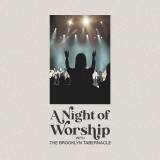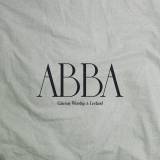The 4 Fundamentals of Mixing Music

What you need to keep in
mind as you mix praise music.
I stole this idea from a
photography class from Ming Thein. There are four fundamentals of
photography that so closely resemble the requirements of a music mix, I
couldn’t help but notice it.
In photography, they
follow as:
1. Light—because a
three-dimensional object becomes two-dimensional in a photo but the
photographer must find a way to make it feel 3D.
2. Subject—it tells the story and
has to stand out from the background through color, size, shape, contrast, etc.
Be it an apple, a person or a pack of cards.
3. Composition—the scene makeup and
relationships between objects.
4. Idea—what does the
photographer want to say? Is it happy, sad, violent, peaceful, etc.?
Hopefully, my photograph
of a dragonfly is a good example. Free photography lesson aside, this is so
much like creating a good music mix.
The Four Music Mix Fundamentals
1. Dimension
The mix has to have
depth. A common mistake I’ve heard is “all channels at the same volume.” One
might say the mix is two-dimensional. Nothing stands out.
A good music mix is
three-dimensional with instruments pushed to the back and pulled to the front.
Backing vocals might sit behind the lead vocal. The lead guitar stands in front
of the bass. All depending on the song arrangement of course. But the mix has
dimension. That’s the important piece.
Dimension is added
through differences in volume, EQ and effects.
2. Subjects (Primary Channels)
Who is the lead vocalist
for the song? What is the lead instrument? Does another instrument ever come to
the forefront?
The subjects are the
major roles in the song. Without them, the song lacks something key to its essence.
Subjects are pulled to
the front of the mix with volume, or in some cases, a competing instrument is
pushed back.
A lead vocal that’s
covered up by electric guitars or drums can’t lead. It can’t fulfill its
required role.
3. Composition
Composition is dimension
plus subjects and then some. The subjects tell you which channels are in the
front of the three-dimensional mix and how all channels are related.
What better place to
talk composition than classical music? That’s a rhetorical question.
Going back to 1984 (a
year to which I oft return), a movie about Wolfgang Amadeus Mozart showed a
fictional account of the relationship between Antonio Salieri and Mozart.
Salieri reflects on a
particular score from Mozart:
“On the page it looked
nothing. The beginning simple, almost comic. Just a pulse. Bassoons and basset
horns, like a rusty squeezebox. And then suddenly, high above it, an oboe. A
single note, hanging there, unwavering. Until a clarinet took over and
sweetened it into a phrase of such delight! This was no composition by a
performing monkey! This was a music I’d never heard. Filled with such longing,
such unfulfillable longing, it had me trembling. It seemed to me that I was
hearing the voice of God.”
That’s composition. It’s
arrangement for musicians, but for you, it’s composition. And it’s composition
for the composer—because that’s what they do, thus the name. (Yes, my mind can
go on like this.)
It’s dimension (high above
it—though more frequency in this case), it’s subject highlight (oboe, then
clarinet), it’s instrument relationships (bassoons and basset horns in
supporting roles).
Dimension is about creating a
3D mix but composition tells you where to place the instruments and vocals in
that 3D space. This is why I encourage people new to mixing or mixing new songs
to listen to the original recordings of the songs so they can make composition
notes that tell them what goes where (and if/how effects are used to accomplish
it).
4. Style Target
Make sure you wear a black
shirt when mixing. OK, it’s not THAT type of style of I’m talking about. I’m
talking about creating a mix that mimics or best reflects the sound desired by
the worship leader or the band’s “defined sound.”
Is the band acoustic-drive?
Pop/rock? What is their style of music? Heck, I’ve heard a Christian punk/rock
band that was outrageously loud (too loud, in fact) but their mix dimension,
subjects and composition was amazingly tight.
Do you have a lead singer, an
acoustic guitar and a piano? How do you think that should sound? Definitely not
like a rock band.
Style target defines how you
mix and what you do with effects.
Going even further, I’ve mixed
contemporary bands for two churches of similar size but because one band used a
keyboard as the primary lead instrument for every song, I had to mix them
differently.
We do three services each
weekend with the same format, same songs, etc. One Saturday and two Sunday. And
while I can hit the mix the majority of the time, I’ve had a couple times when
the next day the worship leader politely said I needed to boost or lower
something. In other words, I wasn’t hitting the target.
Recap
For a quick recap, the
four fundamentals of mixing music are:
- Dimension
- Subject (Primary Channels)
- Composition
- Style Target
As you begin your next mixing
session, consider these four areas when making any mix changes
The 4 Fundamentals of Mixing Music
![The 4 Fundamentals of Mixing Music]() Reviewed by Admin
on
11:28:00 AM
Rating:
Reviewed by Admin
on
11:28:00 AM
Rating:
















Post a Comment